06th INTERNATIONAL CONFERENCE ON
MATERIALS SCIENCE, ENGINEERING & TECHNOLOGY
Date: 28 – 30 May 2025
Venue: Paris, France
In Association With
ABOUT CONFERENCE
The 06th International Conference on Materials Science, Engineering & Technology invites scientists, researchers, engineers, academicians, and professionals from companies around the world to convene and collectively explore their visions, ideas, recent developments, and findings in the expansive realm of materials science. This conference, in association with the North Central College, United States, will take place in Paris from 28th to 30th May 2025. It promises to serve as a dynamic platform for participants to exchange knowledge, innovative ideas, and invaluable experiences, fostering interdisciplinary collaboration and advancing the understanding of various aspects within the field of materials science. Join us as we embark on this enriching journey of exploration and discovery.
- CONFERENCE KEY DATES
27 June 2024 Abstract Submission End
15 August 2024 Early Bird Registration End
28 May 2025 Conference Opening Ceremony
CONFERENCE CHAIR

Dr. Shan-Ju Chiang
Department Head of Mechanical & Electrical Engineering, North Central College, United States
Dr. Shan-Ju Chiang's research is situated in the field of renewable energy, with a special focus on solid-state batteries and advance ceramics. Dr. Chiang sees her research as part of the broader effort in the sustainable energy to study the interaction linking human society, environment, and materials development in the contemporary world.Dr. Shan-Ju Chiang’s research is situated in the field of renewable energy, with a special focus on solid-state batteries and advance ceramics. Dr. Chiang sees her research as part of the broader effort in the sustainable energy to study the interaction linking human society, environment, and materials development in the contemporary world. She is committed to disrupting global trends in engineering with respect to women and men of color receiving engineering degrees, and to make North Central College a national model for equity and excellence in engineering!
CONFERENCE COMMITTEE
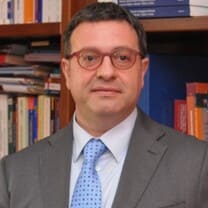
Prof. Francesco Fabbrocino
The Pegaso University
Italy
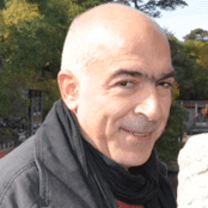
Prof. Shlomo Yitzchaik
The Hebrew University of Jerusalem
Israel
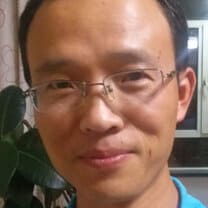
Prof. Xuexi Zhang
Harbin Institute of Technology
China

Prof. Marilena Carbone
University of Rome "Tor Vergata"
Italy
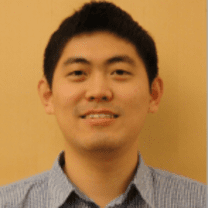
Prof. Zhao Qian
Shandong University
China

Prof. Catherine Stampfl
The University of Sydney
Australia

Prof. Annunziata D'Orazio
Sapienza University of Rome
Italy
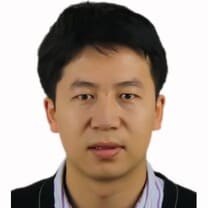
Prof. Xiang Ma
Key Laboratory for Advanced Materials
China
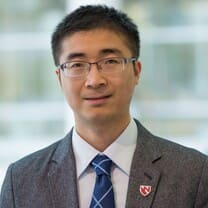
Prof. Bin Duan
University of Nebraska Medical Center
United States

Prof. Xibao Li
Nanchang Hangkong University
China
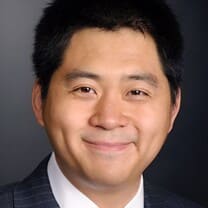
Prof. Guanghui Yue
Xiamen University
China
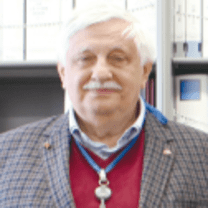
Prof. Victor Ryzhii
Tohoku University
Japan

Prof. Alina Vladescu
National Institute for Optoelectronics
Romania

Dr. Giorgio De Luca
CNR- Institute for Membrane Technology
Italy

Prof. Raul Duarte Salgueiral Gomes Campilho
Porto Polytechnic Institute
Portugal
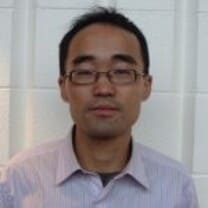
Prof. Kai Yan
Sun Yat-sen University
China
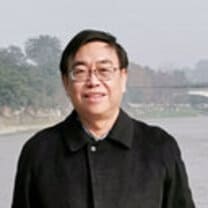
Prof. Jeng-Shyang Pan
Fujian University of Technology
Taiwan
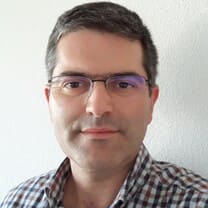
Prof. Jose Xavier
New University of Lisbon
Portugal
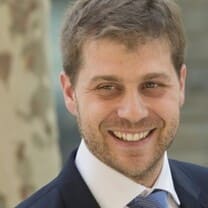
Prof. Pablo Pujadas
Polytechnic University of Catalonia
Spain
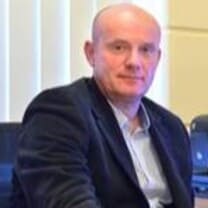
Prof. Marek Krawczuk
Gdansk University of Technology
Poland
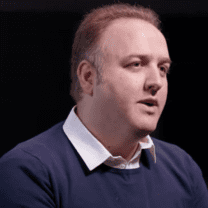
Prof. Abdollah Saboori
Polytechnic University of Turin
Italy
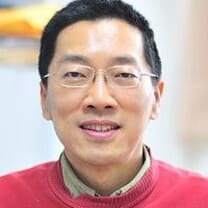
Prof. Yu-Chuan Liu
Taipei Medical University
Taiwan
PREVIOUS EDITION HIGHLIGHTS: SPEAKERS
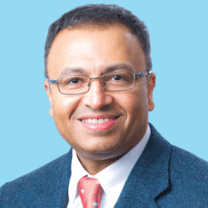
Prof. Walid Daoud
City University of Hong Kong
Hong Kong
Wearable self-powered sensors for biomedical applications
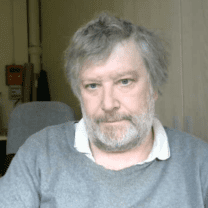
Prof. Nicolas Fourches
CEA-University Paris-Saclay
France
Technological development strategies for the DoTPiX pixel device
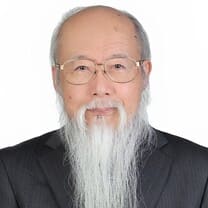
Prof. Masahiro Yoshimura
Tokyo Institute of Technology
Japan
What, how and why soft solution processing (low energy production of advanced nano-materials) is difficult but necessary for sustainable society?
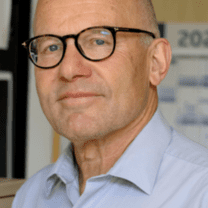
Prof. Franz Josef Giessibl
University of Regensburg
Germany
Atomic force microscopy with qPlus sensors
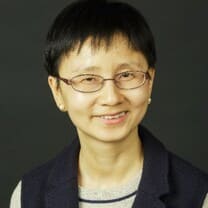
Prof. Rui Feng
Northwestern Polytechnical University
China
Construction and water-collection mechanism of patterned surfaces with bioinspired structures

Prof. Lenuta Profire
"Grigore T Popa" University of Medicine and Pharmacy of Iasi
Romania
Development and characterization of new hyaluronic acid-based nanofibers for wound healing
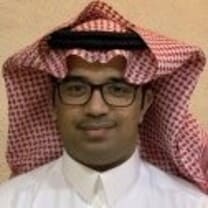
Dr. Faisal Almashary
Qassim University
Saudi Arabia
Investigation of the structural, optical and electrical properties of indium-doped TiO2 thin films grown by pulsed laser deposition technique on low and high index GaAs planes
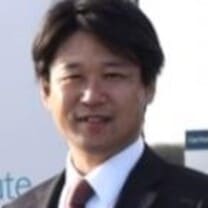
Prof. Chiaki Terashima
Tokyo University of Science
Japan
In-liquid plasma processing for synthesizing the functional materials
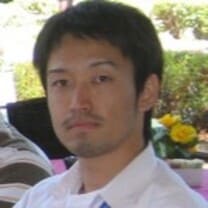
Prof. Go Kawamura
Toyohashi University of Technology
Japan
Nanostructured metal oxide photoelectrodes for solar hydrogen production

Prof. Collin G. Joseph
University Malaysia Sabah
Malaysia
Detergent wastewater treatment using catalytic and non-catalytic ozone gas: Current updates and future directions
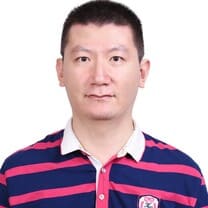
Prof. Wenbo Peng
Xi'an Jiaotong University
China
Piezo-phototronic effect in multi-layer structured optoelectronic: Bilateral piezoelectric charge modulation

Prof. Kamila Koci
VSB – Technical University of Ostrava
Czech Republic
Photocatalytic reduction of carbon dioxide in presence of mesoporous TiO2 photocatalysts
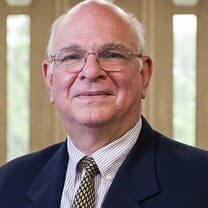
Dr. Michael A. Stroscio
University of Illinois Chicago
United States
Photocatalytic reduction of carbon dioxide in presence of mesoporous TiO2 photocatalysts
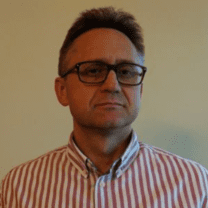
Prof. Mariusz Majchrzak
Adam Mickiewicz University
Poland
An efficient, catalytic control synthesis of new well-defined boron/silicon norbornene derived polymeric materials via ring opening metathesis polymerisation (ROMP)

Dr. Noor alhuda Ahmed AL Saqri
Sultan Qaboos University
Oman
Impact of gamma radiation on the electrical properties of InAs/InGaAs quantum dot-based laser structures: Substrate-dependent effects
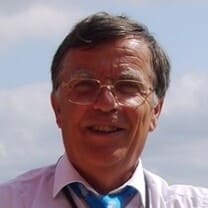
Prof. Olivier BONNAUD
University of Rennes & GIP-CNFM
France
Innovative and strategic training engineering in microelectronics and nanotechnologies for the rapid development of our digital societies

Prof. Manuela Donalisio
University of Turin (DSCB)
Italy
Defending against pathogens: Antiviral and antimicrobial composite coatings
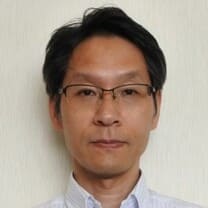
Prof. Shuji Ogata
Nagoya Institute of Technology
Japan
Increased adhesion of amine-cured epoxy resin and silane-treated aluminum originating from H2O-assisted proton transfer: a first-principles simulation study
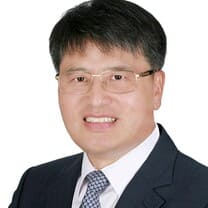
Prof. Young-Rae Cho
Pusan National University
South Korea
Surface modification for mechanical and chemical stability for flexible functional devices

Xiaoxia Yu
Yanshan University
China
Strain-driven anomalous lattice thermal conductivity in BaPdS2
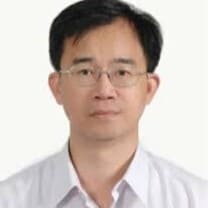
Prof. Dong-Hau Kuo
National Taiwan University of Science and Technology
Taiwan
Surface engineering for enhanced high current density electrolytic green hydrogen production: Metal-doped nickel sulfide nanorods

Prof. Viviane Pilla
Federal University of Uberlândia UFU
Brazil
Optical characterization of natural dye and chitosan-based fluorescent carbon dots for bioapplication
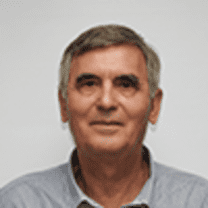
Prof. Nicola Nedev
Autonomous University of Baja California
Mexico
Sputtered NiOx layers for application in broadband photodetectors based on heterojunction diodes
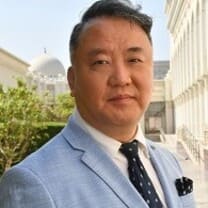
Prof. In-Ju Kim
University of Sharjah
United Arab Emirates
Enhancing floor safety: Investigating traction properties of granite and porcelain tiles in diverse environments
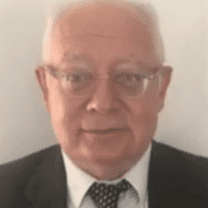
Dr. Valeriy Buryachenko
Micromechanics & Composites LLC, Cincinnati, Ohio
United States
Computational micromechanics of advanced heterogeneous materials
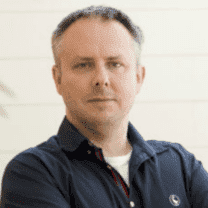
Dr. Maciej Haranczyk
IMDEA Materials Institute
Spain
Toward self-driving laboratory for the design of multifunctional nanocomposites
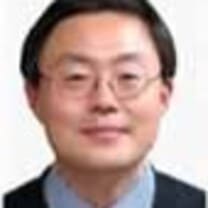
Prof. SangHoon Rhee
Seoul National University
South Korea
Preparation of a poly(lactic acid-co-glycolic acid)/calcium silicate hybrid with dual porosity
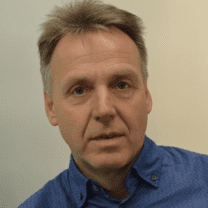
Prof. Andreas Killinger
University of Stuttgart
Germany
Introducing a novel thermal spray process using composite filaments as a feedstock

Prof. Juan P. Martinez-Pastor
University of Valencia
Spain
Tin halide perovskites for photonics and optoelectronics

Dr. Durga Parajuli
AIST
Japan
Prussian blue analog for the electrochemical recovery / removal of ions
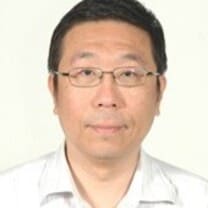
Prof. Ren-Kae Shiue
National Taiwan University
Taiwan
Vacuum brazing in metal-ceramic joining for gas-tight application

Dr. Guari Yannick
CNRS
France
Nanoscale chemistry: Synthesis of prussian blue nanoparticles and their analogues for innovative applications

Prof. Libor Kvitek
Palacky University in Olomouc
Czech Republic
Iron group metal oxides as efficient catalysts for the hydrogenation of carbon dioxide

Prof. Adam Rycerz
Jagiellonian University
Poland
Mott transition in the Hubbard model on anisotropic honeycomb lattice and strain-induced Aharonov-Bohm effect in a carbon nanotube with zigzag edges

Dr. Teresa S. Ripolles
University of Valencia
Spain
Novel reducing agents for controlling Sn-based perovskite solar cell stability

Dr. Aras Kartouzian
Technical University of Munich
Germany
Decoding nature: Chirality’s role in scientific exploration
CONFERENCE HIGHLIGHTS
- Global Participation: Drawing participants from diverse backgrounds and geographic locations, the conference fosters a rich tapestry of perspectives and insights.
- Cutting-edge Research: Explore the latest advancements, breakthroughs, and innovations in materials science, spanning a wide spectrum of topics.
- Interdisciplinary Collaboration: Facilitating interdisciplinary dialogue, the conference promotes collaboration across various fields, driving innovation and discovery.
- Networking Opportunities: Engage with peers, experts, and industry leaders, forging valuable connections and partnerships for future endeavors.
- Knowledge Exchange: Share your vision, ideas, recent developments, and findings, while gaining insights from fellow participants through interactive sessions, and presentations.
- Opportunities to visit the France’s natural and cultural landscapes
Join Us: Embark on this enriching journey of exploration and discovery, as we convene in France for the 06th International Conference on Materials Science, Engineering & Technology. Together, let us shape the future of materials science and propel it to new heights of excellence.
SESSIONS
| Advanced materials for energy storage: Batteries, supercapacitors, and fuel cells |
| Advanced materials for energy-efficient electronics and power devices |
| Advanced materials for energy-efficient sensors and energy harvesting systems |
| Advanced materials for hydrogen production, storage, and utilization |
| Emerging energy storage technologies: Solid-state batteries, flow batteries, etc. |
| Energy conversion and storage in nanomaterials and nanostructures |
| Energy harvesting materials and devices: Thermoelectrics, piezoelectrics, and triboelectric materials |
| Energy materials for water splitting and artificial photosynthesis |
| Energy materials: Synthesis and characterization |
| Energy-efficient building materials and technologies |
| Energy-related materials modeling, simulation, and characterization techniques |
| Environmental impact and life-cycle analysis of energy materials and technologies |
| Materials and technologies for energy storage in electric vehicles |
| Materials and technologies for lithium-ion batteries: Advancements and challenges |
| Materials characterization techniques for energy materials and technology |
| Materials for advanced energy conversion technologies: Solar thermal, concentrated solar power, and thermophotovoltaics |
| Materials for carbon capture, utilization, and storage (CCUS) |
| Materials for energy storage in grid-scale applications: Flow batteries, compressed air energy storage (CAES), and pumped hydroelectric storage |
| Materials for energy-efficient and lightweight transportation: Electric vehicles, hybrid vehicles, and aerospace applications |
| Materials for energy-efficient catalysis and chemical processes |
| Materials for energy-efficient electronics and power devices |
| Materials for energy-efficient insulation and thermal management |
| Materials for energy-efficient lighting: LEDs, phosphors, and organic light-emitting diodes (OLEDs) |
| Materials for hydrogen storage and fuel cells |
| Materials for photovoltaics: Solar cells, thin films, and perovskite materials |
| Materials for sustainable and renewable energy applications |
| Nanomaterials and nanostructures for energy applications: Synthesis, characterization, and performance optimization |
| Nanomaterials for energy conversion and storage applications |
| Nanogenerator and piezoelectronics |
| Novel materials and designs for energy-efficient buildings and infrastructure |
| Organic photovoltaic materials and devices |
| Perovskite solar cells: Materials development and stability enhancement |
| Smart windows and transparent solar cells: Novel materials and applications |
| Solar energy materials and photovoltaic technologies |
| Sustainable materials for energy production: Biomass, biofuels, and waste-to-energy |
| Thin-film solar cells: Materials, manufacturing, and efficiency improvements |
| Characterization and metrology of nanomaterials |
| Commercialization and industrial applications of nanomaterials |
| Gold nanoparticles |
| Nano-biosensors |
| Nanocomposites and hybrid nanomaterials |
| Nanodevices and nanosensors |
| Nanoelectronics and nanophotonics |
| Nanomaterials and nanotechnology – Physics, chemistry and biology |
| Nanomaterials for 3D printing and additive manufacturing |
| Nanomaterials for advanced coatings and surface engineering |
| Nanomaterials for agriculture and food industry |
| Nanomaterials for biomedical applications |
| Nanomaterials for biotechnology and bioengineering |
| Nanomaterials for catalysis and chemical processes |
| Nanomaterials for drug delivery and therapeutics |
| Nanomaterials for electronics and optoelectronics |
| Nanomaterials for energy applications |
| Nanomaterials for energy storage and conversion |
| Nanomaterials for environmental applications |
| Nanomaterials for flexible and wearable electronics |
| Nanomaterials for photonics and plasmonics |
| Nanomaterials for tissue engineering and regenerative medicine |
| Nanomaterials for water purification and desalination |
| Nanomaterials synthesis and fabrication techniques |
| Nanoscale devices and sensors |
| Nanoscale fabrication and manufacturing techniques |
| Nanotechnology and quantum computing |
| Nanotechnology for space exploration and aerospace applications |
| Nanotechnology for sustainable development |
| Nanotechnology for water and air filtration |
| Nanotechnology in agriculture and food industry |
| Nanotechnology in medicine and healthcare |
| Nanotechnology in optics and photonics |
| Nanotoxicology and safety aspects of nanomaterials |
| Physico-chemical nanomaterials and nanotechnology |
| Synthesis and characterization of nanomaterials |
| 2D materials and their functional applications |
| Advanced characterization techniques for functional materials |
| Advanced functional polymers and composites |
| Biomimetic and bioinspired materials: Design and functional properties |
| Commercialization and industrial applications of functional materials |
| Computational modeling and simulation of functional materials |
| Emerging technologies and applications of functional materials |
| Ferroelectric and piezoelectric materials |
| Functional coatings and surface engineering |
| Functional materials for biomedical applications |
| Functional materials for catalysis and chemical processes |
| Functional materials for electronics and optoelectronics |
| Functional materials for energy conversion and storage |
| Functional materials for environmental monitoring and remediation |
| Functional materials for medical and healthcare applications |
| Functional materials for sensors and actuators |
| Functional materials for wearable technology and flexible electronics |
| Functional nanomaterials: Synthesis, characterization, and applications |
| Functional carbon/ quantum dots |
| Functional materials based technology, innovations and market |
| Functional polymeric materials |
| Magnetic and spintronic materials: Properties and applications |
| Materials for energy conversion and storage |
| Multifunctional composite materials: Design, fabrication, and properties |
| Multifunctional materials: Design, synthesis, and characterization |
| Photonic and plasmonic materials: Design, fabrication, and applications |
| Piezoelectric and ferroelectric materials: Design and device integration |
| Self-healing materials and technologies |
| Shape memory materials: Behavior, applications, and advancements |
| Smart materials and structures: Responsive and adaptive behavior |
| Soft and flexible functional materials |
| Stimuli-responsive and adaptive materials |
| Superconducting materials and applications |
| Additive manufacturing of composite and ceramic materials |
| Advanced composite materials: Design, fabrication, and characterization |
| Bio-inspired composites: Structure, mechanics, and applications |
| Biomaterials and bioceramics: Design, fabrication, and biomedical applications |
| Ceramic coatings and surface engineering: Deposition techniques, properties, and applications |
| Ceramic materials for electronic and photonic applications |
| Ceramic materials for energy applications: Fuel cells, solar cells, and batteries |
| Ceramic matrix composites: Processing, properties, and applications |
| Ceramic nanomaterials: Synthesis, assembly, and functionalization |
| Characterization techniques for composite and ceramic materials |
| Composite and ceramic materials for aerospace and automotive applications |
| Composite and ceramic materials in medical and dental applications |
| Electrically and thermally conductive composites |
| Environmental and sustainability aspects of composites and ceramics |
| Fiber-reinforced composites: Manufacturing and performance |
| High-temperature ceramics and composites |
| Hybrid composites: Combining different material types for enhanced performance |
| Industrial applications and commercialization of composite and ceramic materials. |
| Lightweight and high-strength materials |
| Modeling and simulation of composite and ceramic materials |
| Multifunctional composite materials |
| Nanocomposites and nanoceramics |
| Polymer-ceramic composites |
| Polymer-matrix composites: Manufacturing, performance, and optimization |
| Processing innovations in composites and ceramics |
| Smart and multifunctional composites: Sensing, actuation, and self-healing capabilities |
| Smart and responsive composite materials |
| Structural ceramics: Processing, characterization, and mechanical properties |
| Structural health monitoring of composite materials |
| Sustainable and eco-friendly composites: Recycling, biodegradability, and life-cycle assessment |
| Antibacterial and antimicrobial biomaterials |
| Bioactive and antimicrobial materials for infection control |
| Bioactive coatings and surface modifications for medical devices |
| Bioactive glasses and ceramics for medical applications |
| Bioactive materials for wound healing and tissue repair |
| Biocompatibility assessment and testing of biomaterials and biodevices |
| Biocompatible and bioresorbable materials: Design and applications |
| Biocompatible polymers and hydrogels for biomedical applications |
| Biodegradable and bioresorbable materials for medical applications |
| Biodegradable stents and cardiovascular devices |
| Biodevices for drug screening and personalized medicine |
| Bioelectronics and implantable medical devices |
| Biofabrication and 3D bioprinting of tissues and organs |
| Bioinspired and biointerfacing materials for improved biocompatibility |
| Biomaterial-host interactions and biocompatibility assessment |
| Biomaterials and biodevices in nanomedicine and nanotechnology |
| Biomaterials for cardiovascular, dental and orthopedic applications |
| Biomaterials for drug delivery and controlled release systems |
| Biomaterials for neural interfaces and neuroengineering |
| Biomaterials for tissue engineering and regenerative medicine |
| Biomaterials: Synthesis and characterization |
| Biomechanics and mechanobiology of biomaterials |
| Biomedical applications of 3D printing and additive manufacturing |
| Biomimetic materials and structures for biomedical engineering |
| Biosensors and diagnostic devices for healthcare monitoring |
| Imaging and visualization devices |
| Implantable biodevices and bioelectronics |
| Lab-on-a-chip and microfluidic devices |
| Nanomaterials and nanoparticles for targeted drug delivery |
| Radio and photo therapy devices |
| Wearable biodevices and biosensors |
PUBLICATION
The registered abstracts will be published on the conference website. The full paper will be published in the partners journals. All submitted papers will go through the standard review process…..
EARLIER CONFERENCE GALLERY
EARLIER PRESENTATION VIDEOS
Molecularly imprinted photocatalysts: A new route for the selective removal of emergent contaminants from water
Giuliana Impellizzeri | CNR, Italy
Elaboration of polymeric composites with microcrystalline cellulose recovered from agave bagasse: An alternative for the elaboration of materials for the automotive industry
Dendera Munguia | Potosino Institute of Scientific and Technological Research, Mexico
On numerical simulation and visualization methods of turbulent flow near surface morphology using Lattice Boltzmann method
Uldis Zaimis | Liepaja University, Latvia
Novel micelleplexes containing pluronics with application on the oncology field
Ana Figueiras | University of Coimbra, Portugal
LOCATION
Biggest materials science, engineering and technology conference will be held in Paris
Paris, the capital city of France, stands as a beacon of culture, innovation, and economic vitality, while also being a thriving hub for science, engineering, and technology. Revered globally as the “City of Light,” Paris enchants visitors with its iconic landmarks, such as the majestic Eiffel Tower and the splendid Notre-Dame Cathedral, while also serving as a center for groundbreaking research and innovation across various scientific disciplines. Renowned institutions like Sorbonne University and École Polytechnique foster cutting-edge research in fields such as biotechnology, renewable energy, and aerospace engineering, contributing to Paris’s reputation as a global leader in scientific advancement. Additionally, the city’s burgeoning startup ecosystem and investment in technology parks and incubators provide fertile ground for entrepreneurship and technological innovation, further solidifying Paris’s position as a dynamic hub for science, engineering, and technology on the world stage. With its rich history, vibrant culture, and unwavering commitment to innovation, Paris continues to inspire and attract researchers, engineers, and innovators from around the globe, shaping the future of science and technology for generations to come.
SPONSORS & PARTNERS
Why become a sponsor/partners/exhibitor in the materials science conferences?

Make new connections

On-site and online brand exposure

Establish strong relationships
